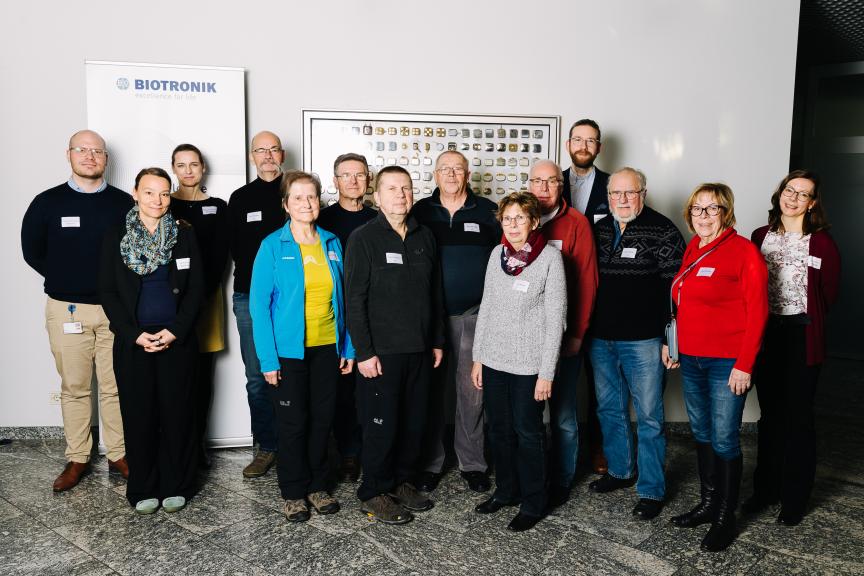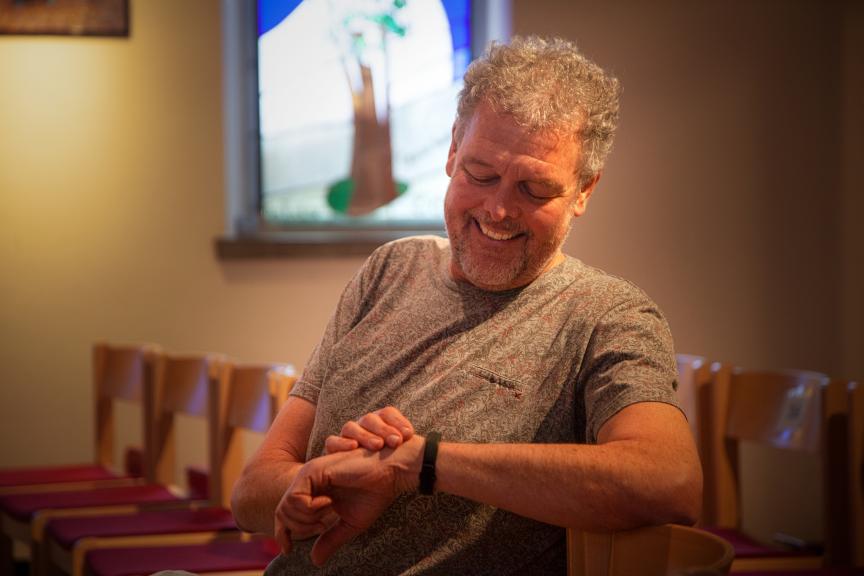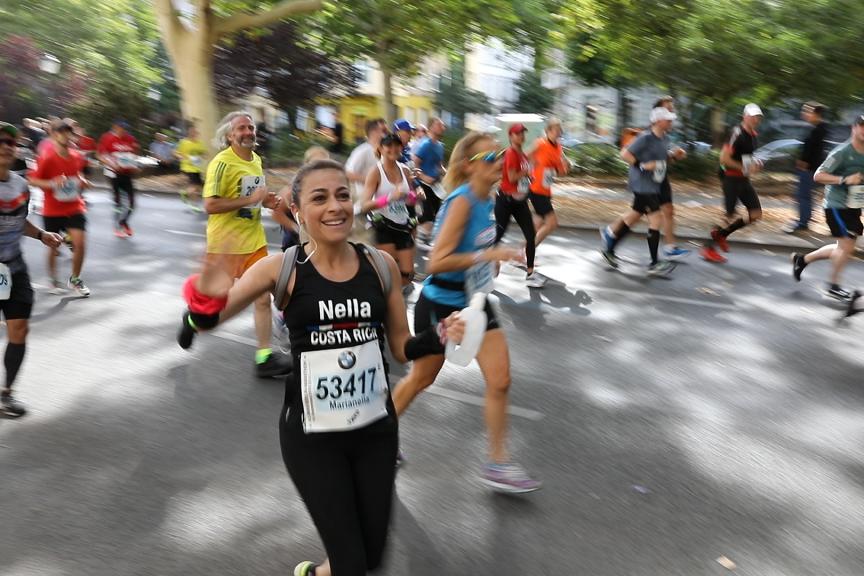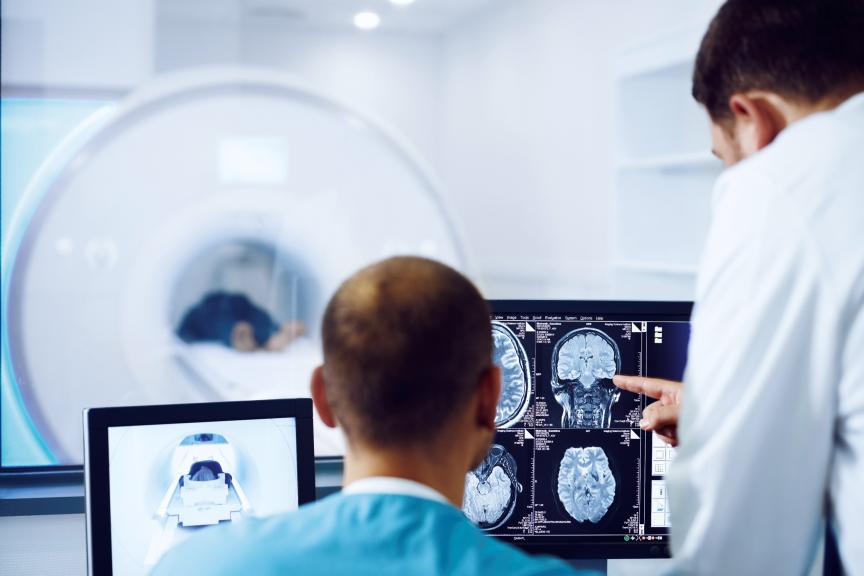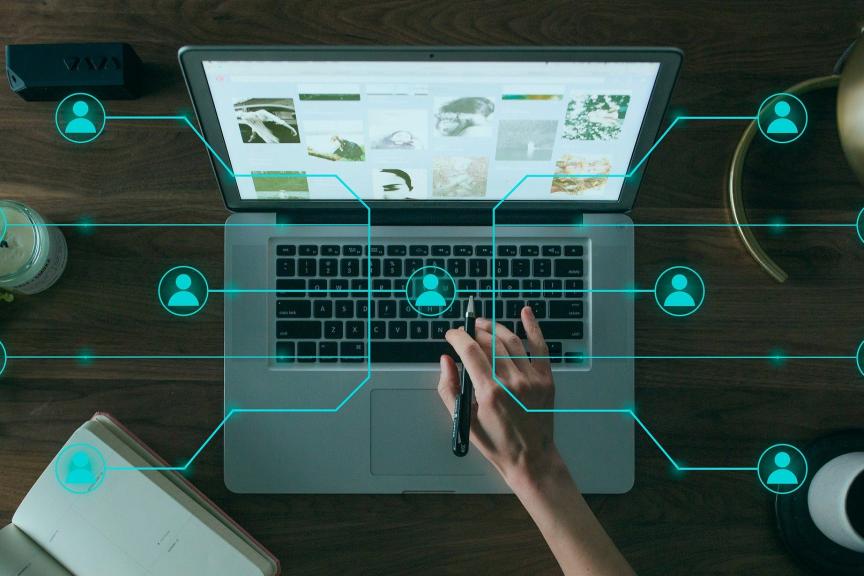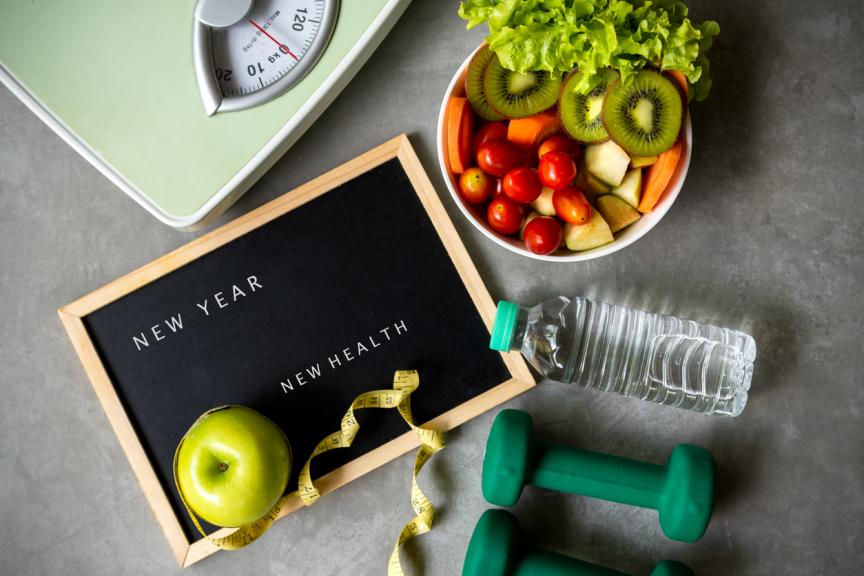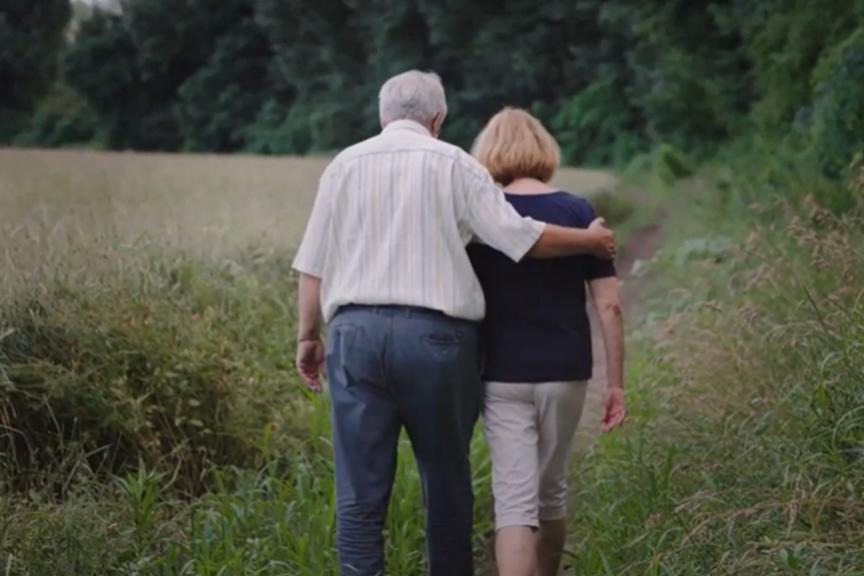“Discussions With My Daughter Gave Me the Sense That Things Could Continue Normally”
BIOTRONIK Employees Share Their Experiences as Relatives of Cardiac Patients
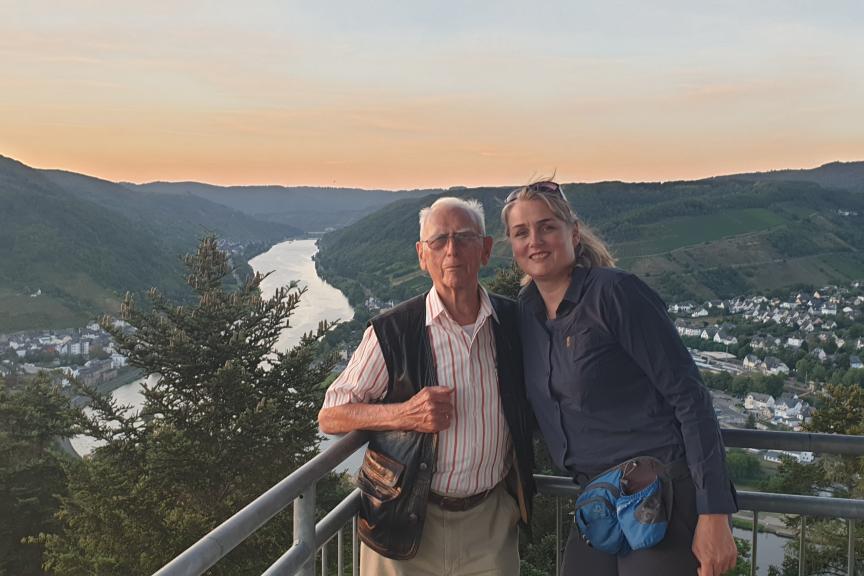
Developing heart problems and even the need for an implant to get one's heart back to its proper rhythm poses new challenges not only for the patients, but also for their families. Heide Hestermann and Matthew Monk explain how relatives can best support heart patients. Not only do they know BIOTRONIK from the employee perspective, they also have family members who are fitted with a BIOTRONIK implant.
When the then 82-year-old Peter Hestermann entered the Sportpark Nord in Bonn's Nordstadt at the end of August 2015 to obtain the German Sports Badge, he knew what he was doing. In 1951, he demonstrated his endurance, strength, speed, and coordination for the first time. He has been successfully defending the sports badge in gold every year since 1966. Spread over several days, he would run 3,000 meters of endurance running, sprint 30 meters, demonstrate his strength in sling ball and standing long jumps, and swim 200 meters. However, he would do this for the first time wearing a pacemaker in his chest.
An accidental finding revealed that his heart rate is much too slow. "I haven't had any heart problems in my life, and I've always practiced a lot of sport," recalls Peter Hestermann. The diagnosis of sinus bradycardia was made as a result of a 24-hour ECG, routinely ordered by the general practitioner. At night, his pulse was dropping below 30 beats. As the physician feared that Peter Hestermann may, among other things, faint while driving, he arranged for the placement of an Etrinsa-8 dual-chamber device from BIOTRONIK on February 19, 2015 at the Marienhospital in Bonn.
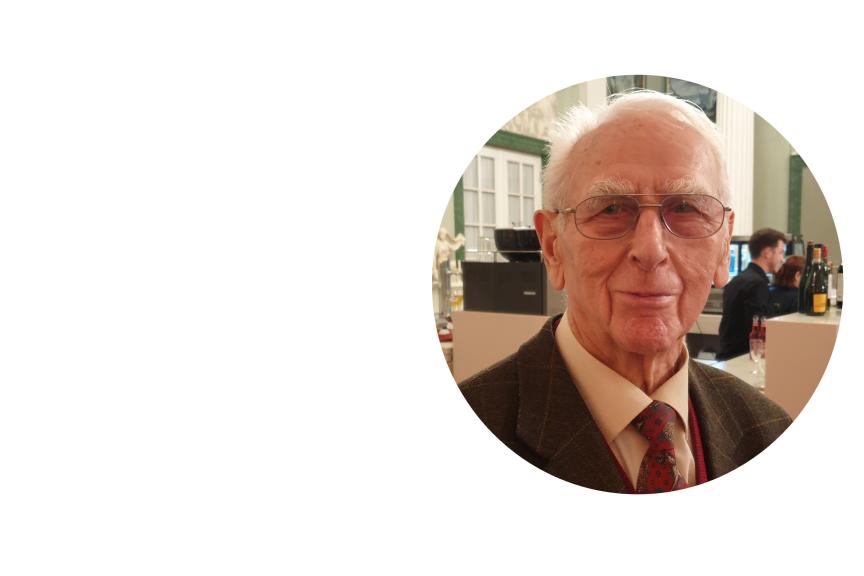
While talking to the physician, I naturally mentioned that I wanted a device from BIOTRONIK.
A Heart Implant Initially Raises Many Questions for Patients
In the same week Peter Hestermann has to attend the hospital for the procedure, his daughter starts working at BIOTRONIK in Berlin. "While talking to the physician, I naturally mentioned that I wanted a device from BIOTRONIK," says Peter Hestermann. "My new colleagues were happy about that too," recalls Heide Hestermann, Scientific Communications Manager at BIOTRONIK. She still has to laugh about that: A colleague recommended her to watch her father's implant procedure for training purposes. Although that was a bit too much for her, she was still able to accompany her father as a contact person in the background and to answer questions about the functioning of the pacemaker. "In the beginning, I had a lot of questions about whether I could continue to do sports and go to the sauna. However, discussions with my daughter and the physician gave me the sense that things could continue in the normal way," says Peter Hestermann.
Matthew Monk, who has worked in business development at BIOTRONIK for almost ten years before recently joining a heart valve manufacturer, also confirms the importance of support from family members. When his father-in-law was fitted with a pacemaker, he was initially very insecure. "He was very concerned because he didn't really understand why he needed the implant," explains Matthew Monk. Antony "Tony" Etheridge, who was diagnosed with cancer several years ago, developed heart problems, probably as a side effect of the chemotherapy. The former accountant, who first emigrated to Cyprus during his retirement, where he then opened a bar, experienced the first symptoms in the form of syncopes. A number of times, he simply fainted in the morning. Since drug treatment of the slow heartbeat proved to be difficult, he was advised to get a pacemaker.
Relatives Can Provide a Sense of Safety – As Can Remote Monitoring
In September 2019, the Briton had an Enitra 8 DR-T pacemaker implanted at the Royal United Hospital in Bath, in the south of England – a well-known address for his son-in-law. For Matthew Monk worked there himself as a cardiac physiologist before switching to the medical technology industry. To him, the advantages of a BIOTRONIK device for his father-in-law were obvious – in particular, the reliability and longevity of the implants speak for themselves, says Matthew Monk. But also the remote monitoring function: As a cancer patient, his father-in-law was a high-risk patient. Every hospital visit that was avoided by BIOTRONIK Home Monitoring was a blessing for the family during the Covid-19 pandemic. He only had to visit the hospital when the pacemaker settings needed adjustment, "but it was good to know that the hospital could use remote monitoring to find out whether this was necessary in the first place," says Tony Etheridge.
How Can Relatives of Heart Patients Provide Support?
Heide Hestermann and Matthew Monk naturally have an advantage: They are experts in implants and can provide their families with expert advice. But what advice do they have for other family members? Both emphasize the often small but important things, such as listening attentively or looking together for information about the disease or patient support groups. "My parents are not Internet savvy, so we watched YouTube videos about bradycardia and how a pacemaker works together," explains Heide Hestermann. And Matthew Monk adds: "I kept encouraging Tony and assuring him that it's okay to always contact the hospital with any questions or problems regarding the implant."
“It Made Me a Little Bit Prouder of BIOTRONIK”
Has the fact that your relatives are fitted with a BIOTRONIK implant changed your view of your job? "Not really," says Matthew Monk. "But it made me a bit prouder of BIOTRONIK." In conversations with hospitals, he often mentioned that his father-in-law is also wearing a BIOTRONIK pacemaker. "I didn't just sell a product, I am truly believing in the BIOTRONIK solutions to this day."
Thanks to this personal experience, Heide Hestermann has now always a clear picture of the patients that may use BIOTRONIK's products and therapy solutions in her daily work. For example, it is nowadays much clearer to her that Home Monitoring is much more than "simply a functionality" and that BIOTRONIK must also assess all products, services and information offers for user-friendliness and patient comprehensibility.
Even though Peter Hestermann and Tony Etheridge have to undergo regular medical checkups, they have become accustomed to their pacemakers as loyal companions – as have their family members, who are patient, supportive and willing to listen. After his pacemaker implantation in 2015, Peter Hestermann has quickly been able to resume his beloved sport – and has been attaining the sports badge in gold every year since then.

